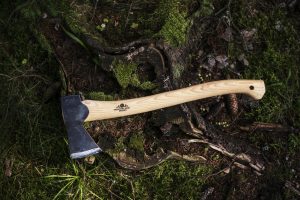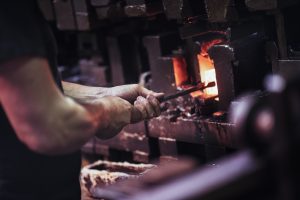The environment is a core focus for Gränsfors Bruk, which is why the materials for the axe are chosen with such great care. Everything that is produced requires resources and all these resources have some impact on our environment. The choice of materials is guided by environmental considerations and aims to be positive for the employees and the end users alike.As part of its green commitment,
Gränsfors Bruk uses:
- steel entirely derived from recycled scrap metal.
- a hickory handle that is strong and flexible, which increases the life of the handle and thus helps reduce consumption of nature’s resources.
- vegetable-tanned leather that is free from heavy metals and is biodegradable.
Steel
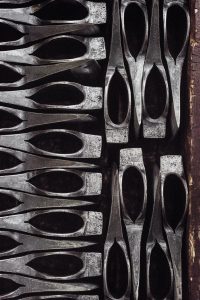
Gränsfors Bruk uses steel from Ovako that derives entirely from recycled scrap. The scrap is sorted into different grades and the steelworks uses a mix of these for the steel that it produces. Like all industrial processes, manufacturing steel affects the environment. Gränsfors Bruk chose to work with Ovako for good reason. As one of Europe’s largest, and indeed leading, steelworks, Ovako has a strong commitment to the environment and invests much of its resources in product development, process development and recycling, in order to have as little impact on the environment as possible.
Its product development is leading to new types of steel that are more durable and have a longer useful life, while its process development is steadily helping to reduce use of carbon, oil and other consumable materials per tonne of manufactured steel. Its recycling of scrap metal also plays its part in protecting the environment.
The steel that Gränsfors Bruk uses has been specially created to produce the perfect axe head. The steel must not be too hard, nor too soft and pliable.
Gränsfors Bruk maintains a constant dialogue with Ovako to secure its supply of steel best suited to axe production.
American Hickory Handle
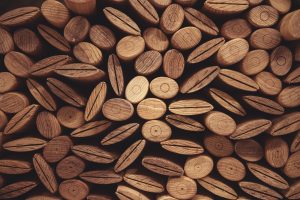
Handles on Gränsfors Bruk axes are designed by Hans Erik Persson. Old traditions have been embraced and adapted to the demands of modern users. The ergonomic shape provides a steady, comfortable grip on the handle, even at arm’s length. Gränsfors Bruk’s handle is made from hickory, the perfect wood because it is both strong and flexible, with long, parallel fibres. This increases the life of the handle and thus helps reduce consumption of nature’s resources.
The wood is dried before turning. This is so that the wood will not dry out any further and shrink once the axe head has been set on the handle. One of the most common causes of an axe head coming loose from its handle is that a green, undried handle has been used, which then dries out, shrinks and comes loose.
In order to further improve the quality of the handle, it is soaked in hot linseed oil. The handle is then treated with beeswax to make it more resistant to dirt and water.
Leather Sheath
All Gränsfors Bruk axes come with a vegetable-tanned leather sheath. Gränsfors sources its leather from Tärnsjö Garveri, one of the few tanneries in Sweden that still produces vegetable-tanned leather. Gränsfors Bruk has specifically chosen not to use chrome-tanned leather, as we feel that its green credentials are not sufficiently high.
The leather is tanned to prevent it being broken down by bacteria. The tanning preserves and improves the natural properties of the leather and can be done either through treatment with natural vegetable products such as bark from various trees, flowers and roots, known as vegetable tanning, or through treatment with chromium, known as chrome tanning.
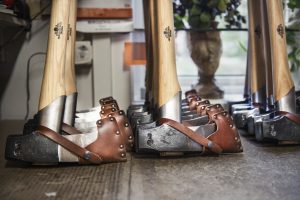
Vegetable-tanned leather dates back many thousands of years. In ancient river cultures, animal hides came into contact with bark, leaves or fruit and changed so that they no longer rotted away in water and heat. Today, vegetable tanning largely involves the same system but using more efficient methods. Vegetable-tanned leather is free from heavy metals and is biodegradable.
In the tanning process, the hide goes through various different treatments such as salting, stripping (removing fat and tissue), washing, re-wetting, pH neutralisation and so on. The hide is then treated in a huge ‘washing machine’ with natural tannins from the plant kingdom. This gives it a natural feel, dimensional stability and an attractive patina.
 Distributed in the USA
Distributed in the USA


